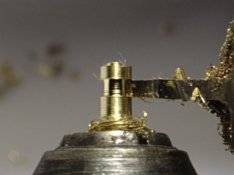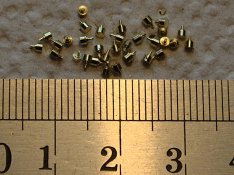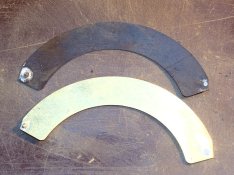Contact with Carl Zeiss Archives , they sent me few Dagor diagrams , 3 or so and I posted to the articles , they were the only dagor diagrams in entire zeiss archive. If they dont reply in two days , write again and ask them whats going on, thats the way to get technical know how from an german archive.
http://www.zeiss.com/corporate/en_de/website/forms/inquiry.html
http://www.zeiss.com/corporate/en_de/website/forms/inquiry.html
For product literature , 100000 of them are there but I could not locate in 1908 , any related document .
http://www.zeiss.com/corporate/en_de/history/archives.html#product-literature
There is a German search option in archives .
http://www.archive.zeiss.de/dok_start.fau?prj=zeiss&dm=akten
I found two papers related to Dagor.
VEB 1948-1964 Als Lesezeichen speichern
Signatur neu:
BACZ 7976
Herkunft:
Photoobjektive
Aktentitel:
669 Korrektions-Darstellungen von Photo-Objektiven eigener Zeissfertigung und fremder Firmen
enthält:
Fotokopien
Laufzeit:
1920 - 1950
Stichwörter:
Fotoobjektive, Darstellungen; Fotoobjektive, Zeissfertigung, Darstellung; Fotoobjektive, fremde Firmen, Darstellung
Geräte:
Tessar 4,5/40; Ernemann 2:10; Tessar 6,3/50; Triplet 3.2:178; Triplet 2,7/7,5; Triotar 3,0/2,7; Hypar 3/35, modifiziert; Tessar 2,7/8,2; Tessar 2,7/8; Teleobjektiv, Rudolph 8/50; Projektionsobjektiv, Müller/Wetzig, 3,6/32; Triotar 3,5/21; Triplet, Spiegelglas, 3,6/7,5; Projektionstriplet, 3,6/15; Tessar 3,57/15; Heliar 4,5/15; Biotar 1,8/8.5; Sucherobjektiv 4,5/7,5; Dogmar 3,5/100,7; Ernemann 2:100; Teleobjektiv 4,5/10; Teleobjektiv 5,3/10; Ernostar 2,7/10; Biotar 1,8/12; Hypergon 22:6; Dagor 1:6,8 / 100; Geodar 7,7/100; Fliegerobjektiv 4,5/21; Epikar 3,7/37; Skopar 4,5/13,5; Kodar 7,9/131; Kodak, Anastigmat 6,3/13; Projektionstriplet 4/38; Radionar 4,5/7.5; Voigtländer 4,5/10; Orikar 3,6/36; Ernoskop 3,2/33,5; Magnar 10:45; Doppelquastigmat 4,5/13,5; Ernostar 2/100; Biotessar 2,2/1,5; Biotessar 2,25/1,5; Tessar 2,7/2,5; Quarzanastigmat 6,3/386; Ernastigmat 6,3/135; Triplet 6,3/13,5; Tessar 4,5/15; Epiotar 3,5/26; Biotessar 2,8/1,7; Geodar 5/21; Biotar 1,4/8,5; Biotar 1,9/2,5; Biotar 1,5/2,5; Weitwinkeldagor 9/10; Trioplar 6,3/135; Biotessar 2,7/4; Kinoteletessar 4/15; Igetar 8,8/9,5; Orthometar 8/13,5; Suchertriplet 2,8/6; William Lee & Kapella 1,8/10; Gallus-Objektiv 8,5/24; Leica-Objektiv 3,5/5; Anastigmat 4,5/10; Triplet 4,5/5; Tessar, Teletessar 850; Anastigmat 2,5/100; Projektionsobjektiv 1,9/10; Mikroprojektionsobjektiv 3,3/5; Tessar, Steoplagmesstessar 8/21; Tessar 3,5/5; Voigtländer 3,5/10; Henon 2/4,5; Geodar 8/13,5; Triplet 4/7,5; Sonnar 4/7,5; Quarzanastigmat 4,5/12; Apochromatclaron 9/18; Sonnar 2,8/5; Sonnar 2/5; Spiegelglastriplet 7,7/10; Tessar 2,8/5; Leitz-Objektiv 2,5/100; Triplet 4/8,0; Sonderobjektiv, MG-Kamera 7,5/9; Messfliegerobjektiv 4,5/25; Pantoskop, Busch 30/206; Orthometar 4,5/21; Sonnar 2/8,5; Tessar 8/2,8; Gramatzki 1,4/10; Meyersatzplasmat 4,5/10; Ernostar 1,4/5; Biotar 1,4/5; Sonnar 1,4/13,5; Biotar 2/5; Biotar 2/4,5; Sonnar 1,4/2,5; Tessar, Teletessar 10/25; Sonnar 1,5/5; Biotar 2/4; Zeiss Ikon 2,8/10; Triplet 3,5/10; Tronnier 3,8/100; Sonnar 2,8/7,6; Minor 1,4/4; Tessar 5/50; Objektiv, Fernobjektiv 8/50; Sonnar 4/13,5; Weitwinkelobjektiv 6/9,5; Kapella 4,5/10; Weitwinkelobjektiv 5,5/10; Feuillet 4/28,3; Schneider 4,5/100; Triplet 3,8/7,5; Tristar 2,8/1,25; Suchertriplet 3,5/7,5; Triplet 4,8/12; Weitwinkelobjektiv 8/3,8; Sonnar 1,2/35; Sonnar, Telesonnar 2,8/1,8; Triotar 5,6/10,5; Epiotar 3,5/43; Biotar 4/10; Voigtländer 2,8/10; Tessar 4,5/50; Biotar 0,85/12; Sonnar 1,5/1,5; Sonnar 2/1; Apo-Planar 9/10,5; Liotar 2/10; Suchertriplet 2,8/7.5; Sonnar 2/8; Triplet 16/21; Sonnar 4/18; Sonnar 4/30; Alinar 1,9/9; Triplet 16/36; Biotessar 2,8/5; Biotar 4/20; Tessar 4,5/25; Tessar 16/21; Weitwinkelobjektiv 6,3/6; Biotessar 2,8/12,4
voriges Datensatz Anfang der Liste 2 von 2 : Forschungszentrum Als Lesezeichen speichern
Signatur neu:
WB 3085
Herkunft:
Prüfvorschriften; Prüfvorschriften W
Aktenplan (1975-1990):
5.2.1.46. Technische Prüfvorschriften
Aktentitel:
Prüfvorschriften für mechanische Komponenten (64) und optische Komponenten (72): Foto
enthält:
Qualitätsanforderungen von mechanischen, optischen Komponenten/Teilkomponenten; technische Parameter; Angabe der Prüfmittel und Prüfmethoden; Messbedingungen und -methoden; Funktionsprüfung des Gerätes und deren Zubehörteile; Sauberkeitsvorschriften; Einstell- und Messbereiche festlegen; Temperaturbedingungen; Auswertung von Messergebnissen; Betriebssicherheit, Schutzgüte; Beschreibung, Funktion und Einstellbedingungen der Bedienelemente; Verhalten des Gerätes
Laufzeit:
1953 - 1968
Stichwörter:
Qualitätssicherung (Foto); Prüfmittel (Foto); Blendendurchmesser; Auflösungsvermögen; Lichthof; Lichtpunkt; Brennweite; Bildgüte (Foto); Verspannung (Deformierung Lichthof); Kälteverhalten; Wärmeverhalten; Kontrastminderung; Springblende; Blendenschließzeit; Lichtdurchlässigkeit; Schlieren; Entfernungsteilung; Bildfeldwinkel; Dauerbelastung, Springblende; Transmissionsgrad; Wärmeverhalten; Kälteverhalten; Entfernungseinstellung; Blendeneinstellung; Druckblende; Dauerbelastung; Drehwinkel; Blendendurchmesser; Farbortlage; Tiefenschärfe
Geräte:
Biometar 2,8/120; Pancolar, 2/50; Biometar 2,8/80; R-Sonnar 1,5/50; Cardinar 2,8/85; Cardinar 4/240; Biometar 2,8/55; Biometar 2,8/77; Triplet 2,8/18 mit 8-Kantprisma; Flektar 3,5/75; UV Achromat 4,5/120; Novonar 3,5/50; Dagor 1:6,8 / 180; Tessar 4,5/40
Institutionen:
FKon1; ZPrüf (Zentrale Prüfabteilung); PhoPrüf; PhokonEnd; PhoKonTest; SKon; FELFo; QQ
English Translation of the second result.
Good luck
Quality requirements of mechanical, optical components / subcomponents; technical parameters; Specification of test equipment and test methods; Measurement conditions and methods; Functional testing of the device and its accessories; Cleanliness requirements; Set the adjusting and measuring ranges; Temperature conditions; Evaluation of measurement results; Reliability, quality protection; Description, function and setting conditions of the controls; Behavior of the device
Running time:
1953 - 1968
Tags:
Quality Assurance (photo); Test equipment (photo); Aperture diameter; Resolving power; Atrium; Light spot; Focal length; Image quality (photo); Strain (deformation atrium); Temperature behavior; Thermal behavior; Contrast reduction; Springblende; Aperture closing time; Light transmission; Striae; Distance sharing; Field angle; Continuous load, automatic diaphragm; Transmittance; Thermal behavior; Temperature behavior; Distance setting; Aperture setting; Pressure diaphragm; Continuous load; Angle of rotation; Aperture diameter; Farbortlage; Focus
Equipment:
Biometar 2.8 / 120; Pancolar, 2/50; Biometar 2.8 / 80; R-Sonnar 1.5 / 50; Cardinar 2.8 / 85; Cardinar 4/240; Biometar 2.8 / 55; Biometar 2.8 / 77; Triplet 2.8 / 18 with 8-prism; Flektar 3.5 / 75; UV achromat 4.5 / 120; Novonar 3.5 / 50; Dagor 1: 6.8 / 180; Tessar 4.5 / 40
Institutions:
FKon1; ZPrüf (Central Inspection Department); PhoPrüf; PhokonEnd; PhoKonTest; Skøn; FELFo; QQ








